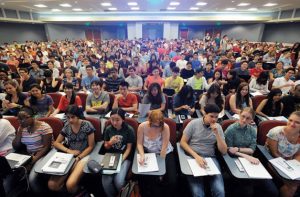Faculty Name:
Vince Hilser, Katie Tifft, Emily Fisher
Course Name:
Biochemistry
Course Delivery:
Face to Face (*currently Fully Online due to Covid)
Course Description:
The molecules responsible for the life processes of animals, plants, and microbes will be examined. The structures, biosynthesis, degradation, and interconversion of the major cellular constituents including carbohydrates, lipids, proteins, and nucleic acids will illustrate the similarity of the biomolecules and metabolic processes involved in diverse forms of life.
Context:
Biochemistry is a large lecture course with more than 450 students each semester. One of the greatest challenges in teaching a course this large is keeping the students engaged. The instructors of this course recognize the value of active learning exercises and therefore use a wide variety of these techniques to keep students engaged with the course content and with each other. Another challenge is making sure the students are keeping up with the course material. An assortment of formative and summative assessment strategies are used in combination to regularly check in with students and benchmark their progress.

